- Eyes
- Large, diameter about half head width.
- Funnel
- 2 separate, elongate, diverging pads.
- Fins
- Anterior lobe absent.
- Fin span about 3 times fin length.
- Gills
- 7 (rarely 6) primary lamellae .
- Optic lobes and nerves
- Optic lobes kidney-shaped.
- 2-3 optic nerve bundles pass through/by the white body.

Click on an image to view larger version & data in a new window
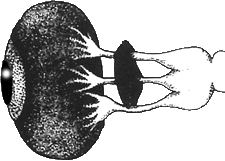
Figure. Ventral view of eye, optic lobe, optic tracts and white body of O. calypso, mature male, 35 mm ML, paratype. Drawing from Villanueva, et al., 2002
- Digestive tract
- Radula absent.
- Glandular mass [presumably the posterior salivary glands] present on buccal mass.
- No clear crop present.
- Digestive gland unilobular.

Click on an image to view larger version & data in a new window
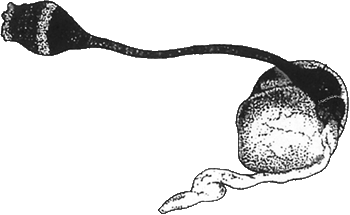
Figure. Digestive tract of O. calypso, mature male, 35 mm ML, paratype. Drawing from Villaneueva, et al., 2002.
- Beaks
- Illustrated but not described.

Click on an image to view larger version & data in a new window
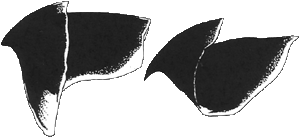
Figure. Lower (left) and upper (right) beaks of O. calypso, mature male, 37 mm ML. Drawings from Villanueva, et al., 2002
- Male reproductive system
- Accessory gland 2 largest.
- Penis short, cyclindrical.
- Spermatophores (= sperm packets) fusiform or ovate, 1.5-2 mm in length; opercular flap present at each end of spermatphore.

Click on an image to view larger version & data in a new window
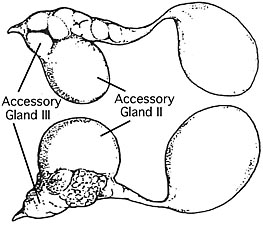
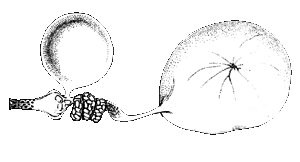
Figure. Male reproductive tract of O. calypso. Left - Mature male, 34 mm ML. Right - Mature male showing spermatophores at the base of the smaller "accessory" gland. Drawings from Villanueva, et al., 1992.
- Female reproductive system
- Distal segment of oviducal gland - brown color with striations.

Click on an image to view larger version & data in a new window
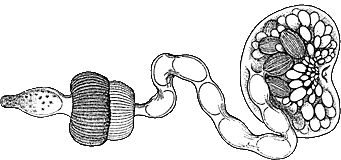
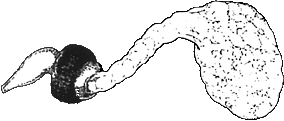
Figure. Female reproductive sytem of O. calypso. Drawings from Villaneueva, et al., 2002.
- Shell
- U-shaped.
- Saddle concave on outer surface from slight inrolling; convex inner surface.
- Lateral wings taper to acute points.

Click on an image to view larger version & data in a new window

Figure. Dorsal (left) and ventral (right upper) views and lateral (right lower) views of the shell of O. calypso, mature male, 37 mm ML. Drawings from Villanueva, et al., 2002.
- Pigmentation
- Before fixation, oral and aboral surfaces with equal reddish-brown color.
- Areolar spots not observed.
- Measurements
- Measurements and counts can be found here.
Comments
The above description is from Villaneuva, et al., 2002 and Villaneuva, 1992.
References
Villanueva, R. 1992. Continuous spawning in the cirrate octopods Opisthoteuthis agassizii and O. vossi: features of sexual maturation defining a reproductive strategy in cephalopods. Mar. Biol. 114:265-275.
Villanueva, R., Collins, M., Sanchez, P. and N. Voss. 2002. Systematics, distribution and biology of the cirrate octopods of the genus Opisthoteuthis (Mollusca, Cephalopoda) in the Atlantic Ocean, with description of two new species. Bulletin of Marine Science 71(2):933-985.
About This Page
Drawings from Villaneueva, et al., 2002 printed with the Permission of the Bulletin of Marine Science.

Instituto de Ciencias del Mar (CSIC), Barcelona, Spain

University of Hawaii, Honolulu, HI, USA

National Museum of Natural History, Washington, D. C. , USA
Page copyright © 2003 , , and












 Go to quick links
Go to quick search
Go to navigation for this section of the ToL site
Go to detailed links for the ToL site
Go to quick links
Go to quick search
Go to navigation for this section of the ToL site
Go to detailed links for the ToL site